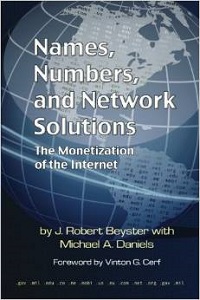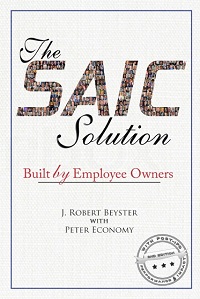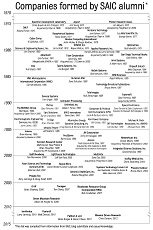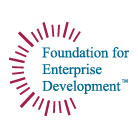DARPATech 2007
4 Comments Published by Dr. Beyster August 15th, 2007 in Entrepreneurship, Government, Technology.These are my first impressions of DARPATech 2007, which finished last Thursday, August 9, in Anaheim. The meetings were conducted in the Marriott Anaheim Hotel and were attended by 3,000 participants. I must say that I was overwhelmed by the technology presented — both at the meetings, and at the Exhibit Hall.
On Monday night, the DARPA alumni gathered for a dinner event. DARPA Director Tony Tether welcomed all of us, and described — both orally, and with the first of several videos on the DARPA programs — what was going to happen at the meetings. During the three days, each DARPA office was scheduled to present a program. A spokesman from each of the services — Army, Air Force, and Navy — and the different intelligence agencies also talked.
Tuesday, August 7
On the morning of Tuesday, August 7, Tony Tether described how DARPA works, and its responsibilities: looking for reasonably high-risk, but high-payoff defense-related projects. Stealth started at DARPA, then it went through several stages as it transitioned to the Services. The Defense Sciences Office (DSO) made their presentations next. The DSO strikes me as an office that looks at the scientific content of all DARPA projects. The topics included discussion of the revolution that is occurring in materials, mathematics, and simulation — including building simulation programs without using computer programmers. A discussion of inner armor was also included.
After that, the Secretary of the Air Force — Michael Wynne — talked, and the Exhibit Hall opened. The afternoon session included Microsystems Technology Office (MTO) presentations on the future of component technology microelectronics. I believe DARPA stated that they are now working on nanotechnology — the importance of nanoelectronics in the future and its military relevance was discussed.
DARPA is working on ultra-low-power digital electronics because the warfighters have to carry too much of a load into battle, and efforts to improve batteries to decrease their weight is vitally important. I will not go into the details here, but I have to tell you that I was overwhelmed by what I saw. One of the most important observations was the notion of trusting the proponents of a technology, but at the same time enacting active systems to verify that the programs are performing. Marine Lt. General Amos spoke about the importance of DARPA programs in helping the Marines achieve their combat objectives. All these programs are helping provide technology vitally important to the Marines. The Marines are willing to accept more risk in sponsoring new programs than are the other armed services.
Wednesday, August 8
On Wednesday, August 8, Secretary of the Navy Donald Winter talked about the Navy’s interface with DARPA. Following that, the Information Processing Technology Office (IPTO) made their presentations, which covered among other things DARPA programs to increase computing speed by orders of magnitude. Artificial learning, reasoning, and language translation were also presented. Following this, the Tactical Technology Office (TTO) made its presentation. The head of the Office — Stephen Welby — talked about the importance of sponsoring programs that stretch our imagination, as well as those technologies that would allow our military to get to the target faster, operate without restrictions, operate with persistence, and deliver precision effects. Again, it’s important to exercise judgment in establishing realistic time scales for attaining these objectives. Following that, Deputy Secretary of Defense Gordon England was scheduled to talk, and he had to join us by video telecom, since Bob Gates — the Secretary of Defense — was preparing for travel. At 2:45 p.m., the Virtual Space Office (VSO) made its presentation, and the speakers discussed DARPA’s mission in space and its role with the services and the intelligence community. They discussed DARPA’s vision of its role in space, and such matters as a future access infrastructure, space situational awareness, protection of space assets, and how to avoid surprise with maneuverability. Following the presentation, an awards banquet was held for all attendees.
Thursday, August 9
On Thursday the 9th, General William Wallace from Army TRADOC talked about training and doctrine. Following that, program managers from the Strategic Technology Office (STO) made presentations on the new strategic environment, chemical mapping of urban environments using fingerprints as an identifier of the presence of chemicals, technologies for hearing through walls and dirt, seeing through haze, empowering the guy on the ground, maritime challenges, and energy as a tactical asset. In Iraq, the military has access to plenty of oil, but as I said earlier, anything that will reduce the energy required for the tactical warrior and lessen the weight he is required to carry is a high priority for DARPA and the services.
After that, Tony Tether made an announcement on the upcoming Urban Challenge competition. This event is a follow on to the successful Grand Challenge, in which SAIC scored high. A simulated typical Iraqi urban environment is being built for the Urban Challenge — to be located at a base in CA. There will be 36 autonomous vehicles participating in the event. If any participants disclose ahead of time any details of the event, they will be precluded from participating. DARPA wants to be sure that participants do not communicate with one another and that there are no information leaks. The STO continued its presentation, discussing the programs DARPA is participating in to improve technology for sharpening networks, how to use DARPA robotic technology to do the heavy lifting, DARPA’s efforts to bridge the gap between strategic/operational warfare and tactical warfare, tactical networking (it’s not just a matter of command and control), helping to develop enabling technologies for a secure global mobile information grid, and strategic network technologies and the warfighter.
After that, presentations were made by the Information Exploitation Office (IXO) about advanced technology that will help find the bad guys in difficult environments, the mapping revolution — which allows the warfighter to know exactly where he is using GPS and other technologies — how to better exploit sensor data, pattern recognition, and how space assets can be better utilized on the ground.
This is a quick summary of what happened at a rather mind-boggling meeting. A major objective pointed out by Marine Lt. General Amos in this asymmetric war situation is that an improvised explosive device is the one weapon in the enemy’s hands which we at the present time have no way of sensing before it goes off. Much of DARPA’s budget and that of the Army and Navy are dedicated to finding that one weapon. And ideas — particularly along the lines of using certain sensors to locate the places where these bombs are being fabricated — is a very high priority. As General Amos said, this effort should take on the urgency of a mini-Manhattan Project.





Dr Beyster – no response to DARPATech other than it was an impressive display of the direction of technology. I’d like to change the subject to a curious development I’m interested in your thoughts on. While it’s not as exciting as the technology you mentioned, it is interesting.
The Nasdaq has launched a “Private Stock Market” entitled the “Portal Market” based upon a 1990 securities rule 144A. A company can list on this new platform while remaining private….in a sense. No SEC or Sarbanes-Oxley filings. The common retail investor is not allowed to trade in these firms. This development is noteworthy for a couple reasons (my opinion):
o 2006 was the 1st year that corporate entities raised more money from private investors (thru Private Equity firms) than through IPOs. This will further that trend.
o Retains the advantages of being public without shouldering the disadvantages (volatility is stock price or SOX burdens, for example)
o Eliminates the expense of being a public company, but unlocks the liquidity enabled by a public market (information on a company is provided via a secure website by the way)
I’m intriqued by this, so my question for you is: Would this have been a valuable supplement to the core employee-ownership capital structure at any time during SAIC’s history?
Thanks,
Kevin
PS: I had drinks with Bob Shokes recently and he gives you his best wishes and wants a tour of that new boat!
Kevin: It’s hard to know what we would have done if the new NASDAQ vehicle had been available to us. I’m sure the employees would have preferred to hold on to most of the equity in the company and, as I’ve said before, what with the sale of Network Solutions and Telcordia, we had plenty of money. However, we did borrow from the banks to make sure we had a credit line available in case we really needed it. Having a small percentage of our stock listed on this new NASDAQ trading market would have been an interesting thing and possibly would have served as a great aid to the appraiser when they did their quarterly appraisals. It’s hard to tell, but knowing the board as I did and their conservatism, I believe they would have explored the idea. Thank you for pointing out this very important tool that’s now available to people who are starting small companies.
I was disappointed that there is apparently no reference to my brother, Jerry, in your web site’s content.
Jim
Jim: I’m sorry your brother has not been referenced on the web site. The reason is that although he did a lot to help grow the company — and he’s mentioned several times in The SAIC Solution, which I’m sure you’ve read by now — the blog is more focused on current people and events. As we discuss stock purchase plans in the future on the blog, I’m sure your brother’s name will come up. – Bob